User scenario
An example from sap help
For a car, the interior, the engine capacity, and the exterior paint color can vary, for example. When the customer selects this car in the Web shop, the possible characteristics for the product are displayed automatically. The customer can select the characteristic values that he or she wants. Only characteristics that are compatible with the previously selected characteristic values are shown. If the various characteristics of a product affect its price, the price that is displayed is also recalculated.
Detail step
This issue introduces basic functionality of product model in CRM WebClient UI, which is a prerequisite knowledge for co-deployment project.
You should first switch on configurable flag for the product type via customizing below:
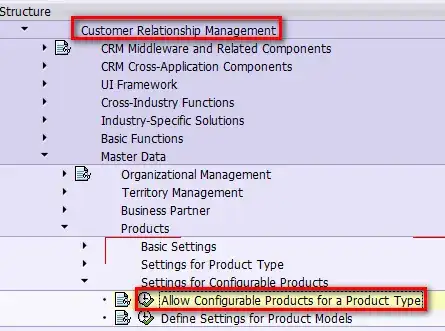

- Create a new product and make sure "Configurable" flag is clicked:

Save the product. Now you should see "Product Model" assignment block. Click "Edit List" to create a new model:

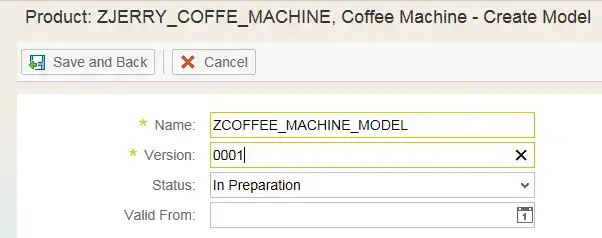
- Create a new Characteristic based on "UNGROUPED":
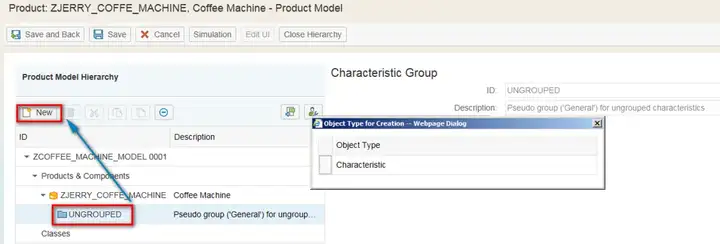
Choose String as data type:
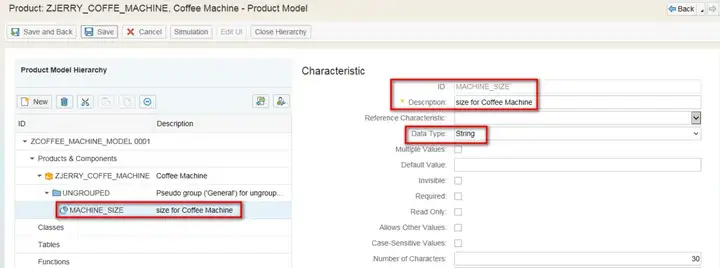
Based on this size characteristic, create three local values:

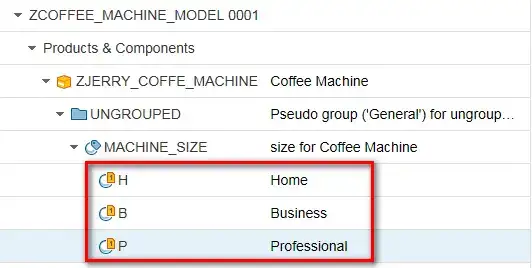
Create another COLOR characteristic:
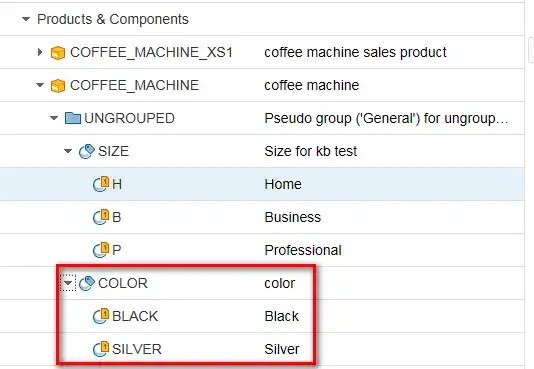
And the third chatacteristic for Accessory number:
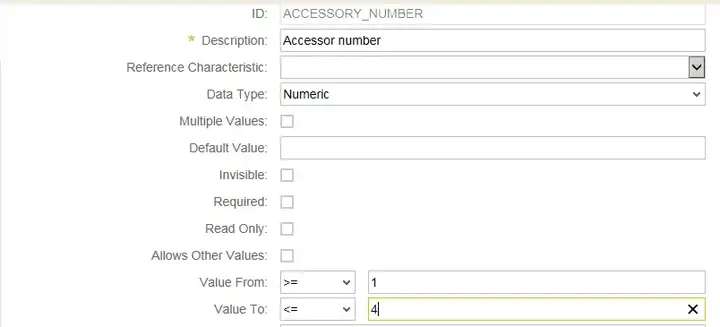
- Set the model status to Released:

And click "Apply Changes":

Now the model is ready for simulation:

Once you click Simulation button, you can configure the model according to available characteristic value maintained in previous step:
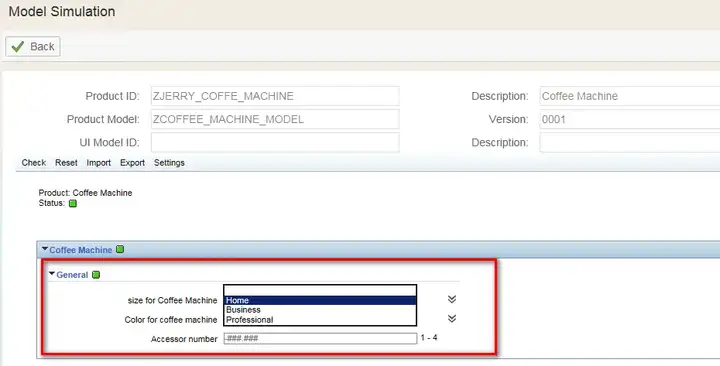
Once you have done value selection, click preview hyperlink:
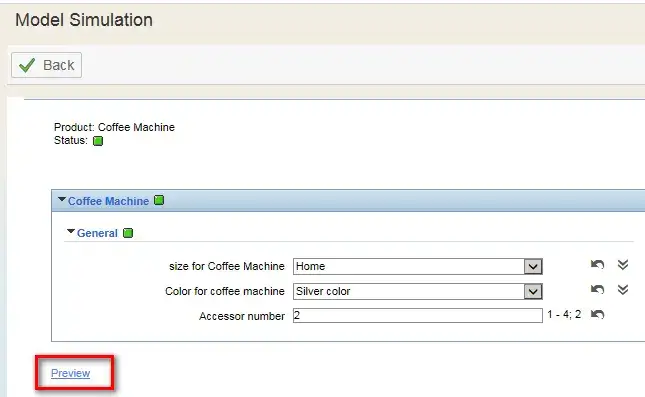
You will get an overview of configured product model:
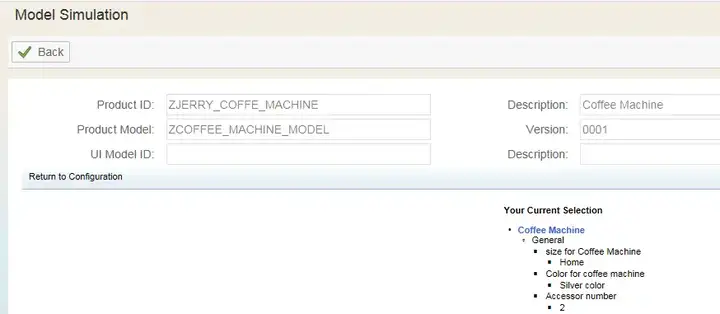
Edit the product Model created in previous blog, create a new dependency with type "Formula":
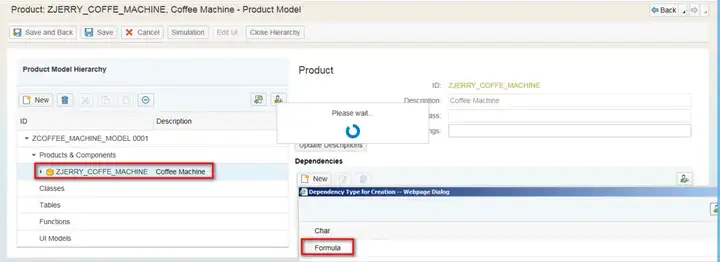
We can maintain formula for example below. In this case, it means "if the characteristic MACHINE_SIZE is selected as H(Home), another characteristic ACCESSORY_NUMBER would automatically be determined as 2".
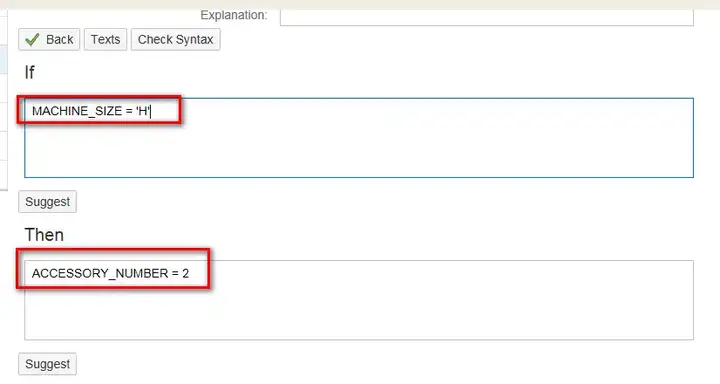
You can click button "Suggest" to get some editing proposal.
Once edit is done, click "Check Syntax" to ensure the formula does not have any syntax error.
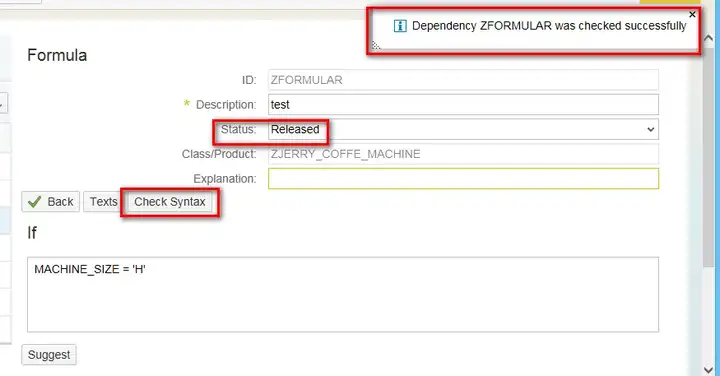
Since the product configuration engine is implemented in Java, there is a corresponding remote function module which delegates the check job to Java application running in virtual machine container.

You can find more information by tcode SM53:

Now simulate the product model, once Home is selected from drop down list and press entry key, the value 2 is automatically determined to 2 as expected.

Use product model in Quotation scenario
Create a new quotation, add the product which owns the created product model as item. Save the quotation.
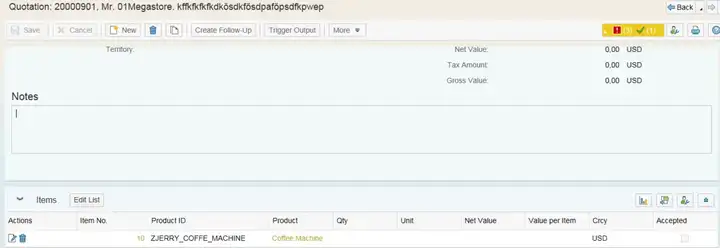
Enter the item detail page, you can see a new "Configuration" assignment block.

The product model simulation page is now opened as a embedded view in Quotation item detail page.
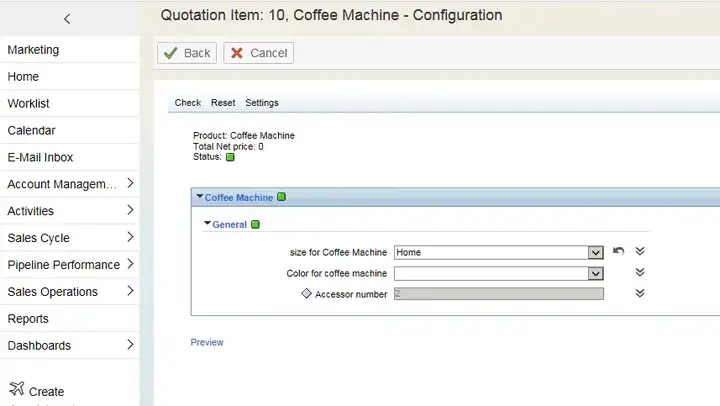
Select value for characteristic according to your business. Now the configured product is persisted in quotation item level.

要获取更多Jerry的原创文章,请关注公众号"汪子熙":







相关推荐
5. **实体类(Entity)**:为了将数据库表映射到Java对象,通常会创建一系列的实体类,如Customer、Order和Product,这些类包含了数据库表的字段,并通过getter和setter方法进行访问。 6. **数据访问对象(DAO)**...
Teamcenter是西门子推出的一款全面的PLM(Product Lifecycle Management)解决方案,它利用SOA理念提供企业级的产品生命周期管理服务。 标题"SOAOperation_soa开发_SOA_teamcenter_TeamcenterSOA_"暗示我们将深入...
6. **MBD (Model-Based Design)**:MBD是一种工程设计方法,利用模型来描述和分析系统,有助于在设计早期发现和解决问题,提高软件质量和效率。 7. **PLM (Product Lifecycle Management)**:PLM是产品生命周期管理...
这份文档可能包含了15页的详细内容,涵盖了 hybris 中用于增强用户体验、定制业务逻辑或自动化任务的脚本语言的使用方法。 【标签】"hybrisCommerceDe" 显然是 hybris Commerce 开发的简称,表明主题是与使用 ...
产品数据管理,通常简称为PDM(Product Data Management),是一种集成化的信息管理系统,主要用于收集、组织、存储、检索、控制和分发与产品相关的数据和信息。在“产品数据管理期末书面报告.doc”中,我们可以看到...
在这个系统中,可能会有Employee、Customer、Product、Order等类,每个类代表一个业务实体,包含相应的属性和方法。 4. **数据库接口**:企业管理系统通常需要与数据库交互,存储和检索大量数据。这可能涉及到SQL...